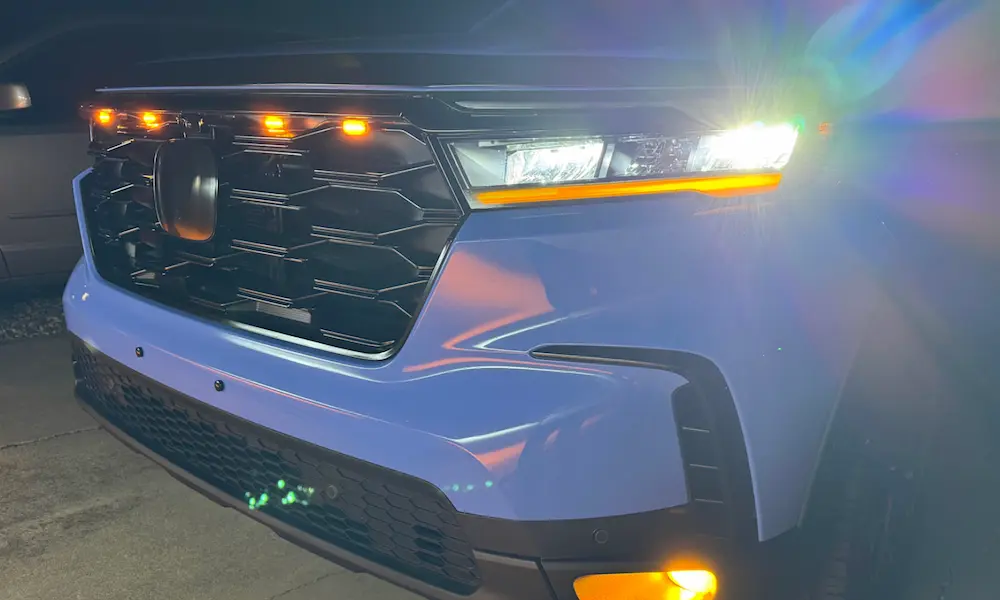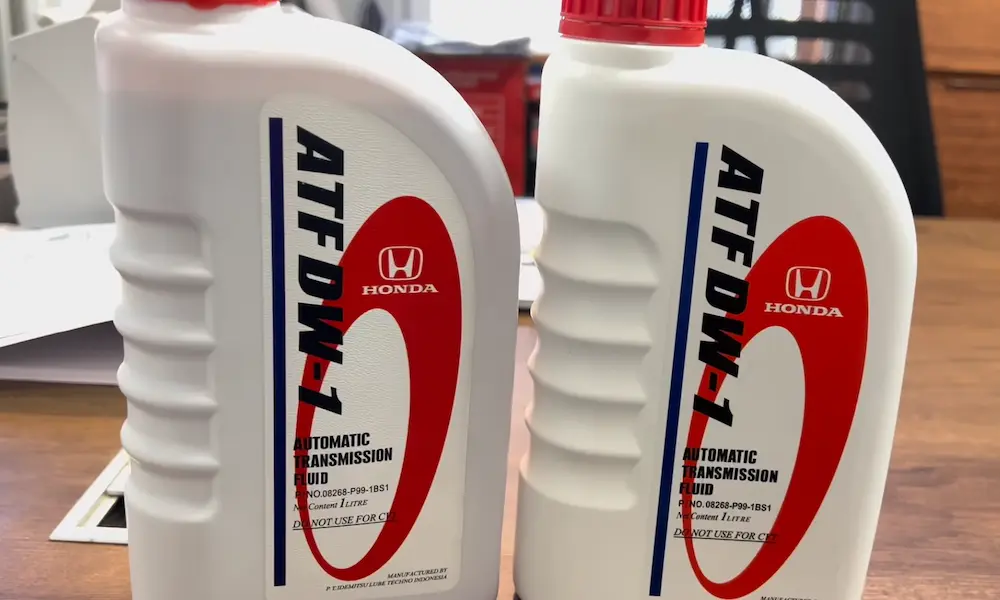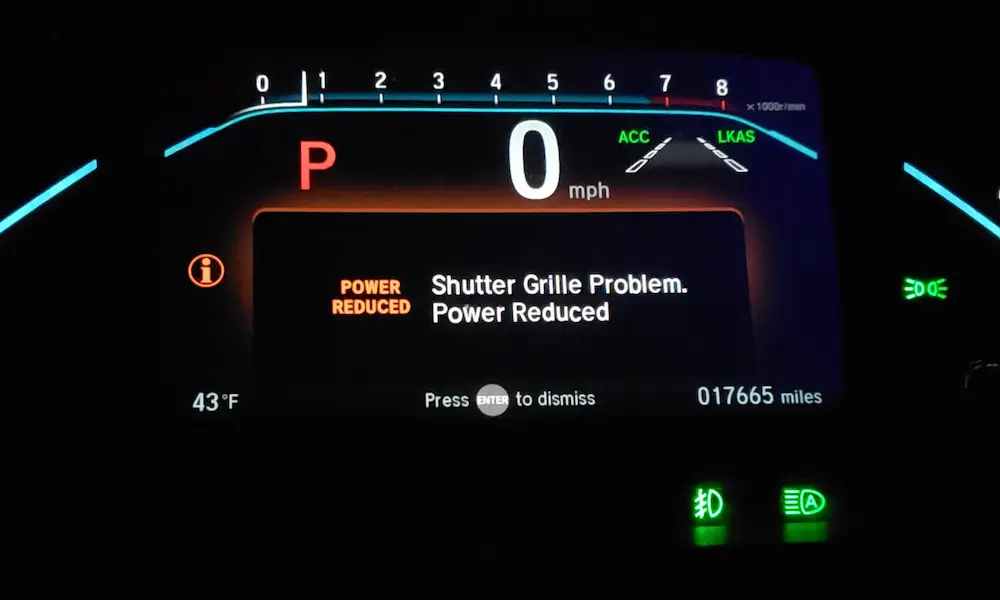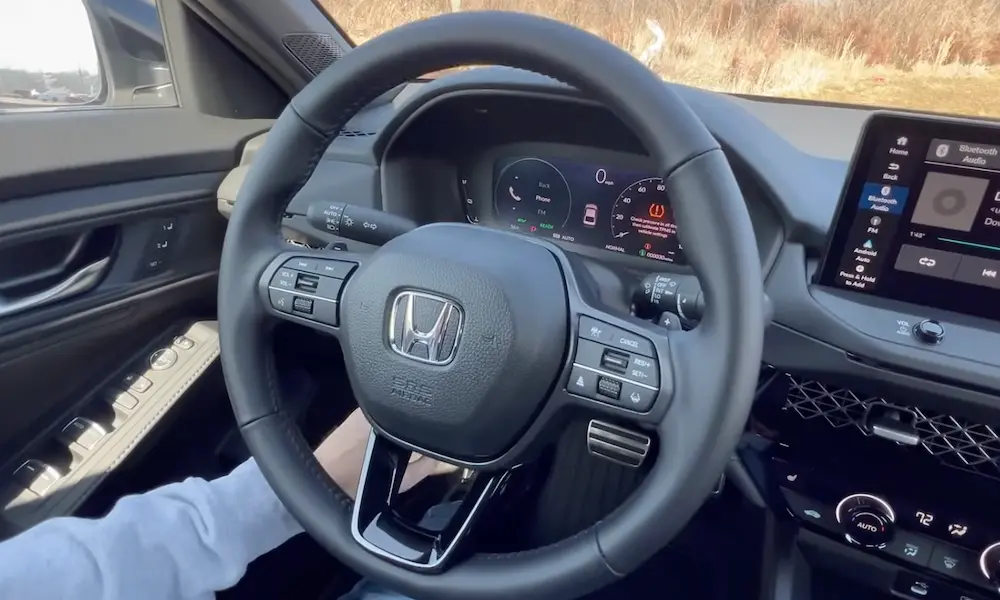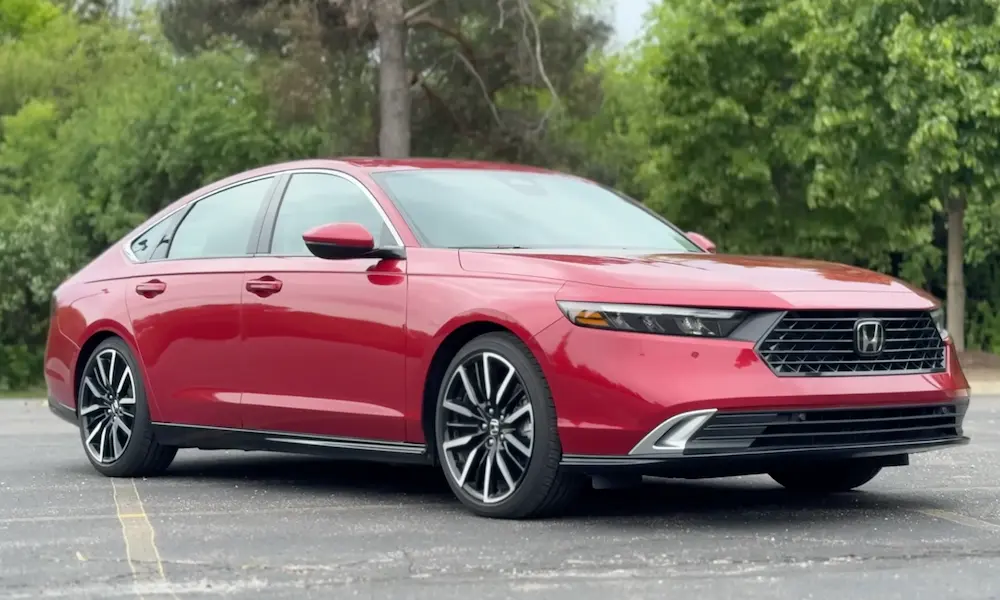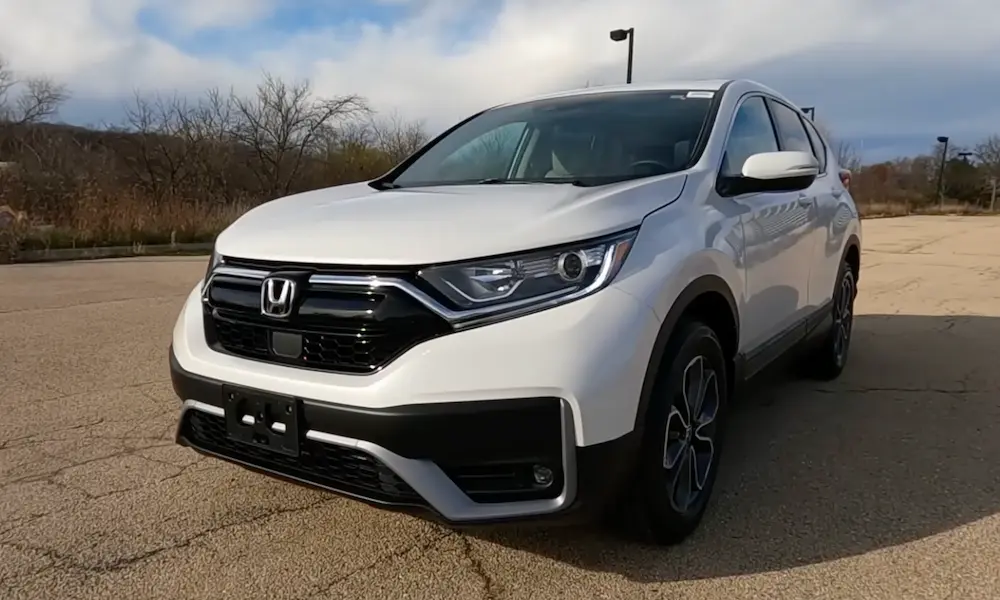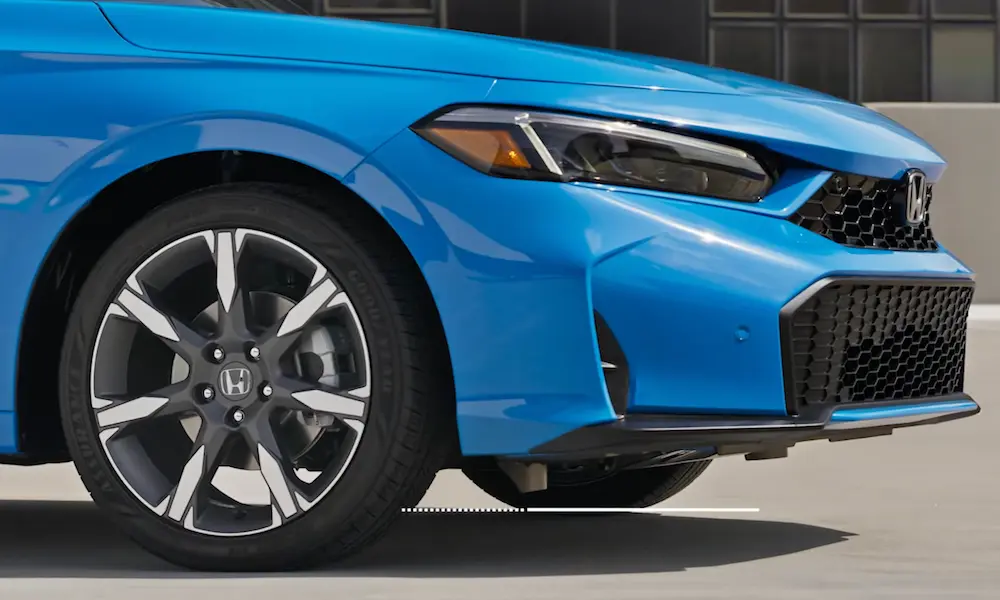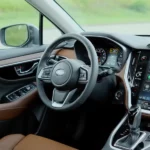Is your Honda CR-V flashing warning lights or feeling sluggish on the road? That “Emissions System Problem” message might be more than just an annoying dashboard alert. Whether you’re cruising in a brand-new model or maintaining an older CR-V, understanding these emissions issues can save you from costly repairs and keep your SUV running smoothly.
What Exactly Is the Honda CR-V Emissions System Problem?
The emissions system in your Honda CR-V works to reduce harmful pollutants before they exit through your exhaust. When this system develops problems, your vehicle will typically alert you with dashboard warnings and may even limit performance.
Between 2017 and 2024, Honda issued multiple recalls affecting millions of CR-Vs due to emissions-related issues and components that indirectly impact the emissions system. These problems aren’t just annoying—they can lead to failed emissions tests, reduced fuel economy, and potentially expensive repairs if ignored.
Warning Signs Your CR-V Has Emissions Problems
Dashboard Warning Lights That Shouldn’t Be Ignored
That glowing check engine light or specific “Emissions System Problem” message is your CR-V’s way of saying something’s wrong. These warnings often appear alongside a “Power May Be Reduced” notification, indicating your vehicle’s onboard computer has detected irregularities in the exhaust system. In more serious cases, a flashing check engine light signals an urgent problem that could damage your catalytic converter if not addressed quickly.
Don’t ignore these warnings—they’re designed to alert you before minor issues become major expenses.
Performance Issues That Signal Emissions Problems
Your CR-V might be telling you something’s wrong even before the warning lights appear. Watch for:
- Sluggish acceleration or hesitation
- Unexpected stalling or rough idling
- Reduced power, especially during acceleration
- Strange smells from the exhaust
These symptoms often result from improper fuel mixtures or exhaust gas recirculation problems. For example, when your mass airflow sensor malfunctions, it miscalculates air intake volumes, leading to poor combustion and reduced performance.
Fuel Efficiency Dropping Unexpectedly
Notice your CR-V suddenly guzzling more gas? Emissions system problems typically cause increased fuel consumption. When components like oxygen sensors fail, they can’t properly adjust your engine’s air-fuel mixture, resulting in inefficient burning of fuel.
A 10-15% drop in fuel economy often indicates an emissions system issue that needs attention.
Common Causes of Honda CR-V Emissions Problems
Catalytic Converter Issues
The catalytic converter is crucial for cleaning exhaust gases, and it’s also one of the most expensive emissions components to replace on your CR-V. Common reasons it fails include:
- Oxygen sensor failures sending incorrect data to your engine computer
- Engine misfires allowing unburned fuel to damage the converter
- Exhaust leaks introducing excess oxygen into the system
When the catalytic converter begins to fail, you’ll often see the P0420 trouble code when the vehicle is scanned—a direct indicator of catalyst system efficiency below acceptable thresholds.
EVAP System Failures
The Evaporative Emission Control (EVAP) system captures fuel vapors from your gas tank to prevent them from escaping into the atmosphere. Common EVAP issues in the CR-V include:
- Loose or damaged gas cap (the simplest and cheapest fix!)
- Malfunctioning purge valves causing rough idle
- Leaking vapor hoses or connections
- Saturated charcoal canister that can no longer absorb vapors
EVAP problems typically trigger codes like P0455 or P0457, indicating the system has detected vapor leaks.
Oxygen Sensor Malfunctions
Oxygen sensors monitor exhaust gas composition and help your engine computer adjust the fuel mixture. When they fail:
- Your engine runs rich or lean
- Fuel economy decreases significantly
- Exhaust emissions increase
- Catalytic converter may overheat and fail
Honda CR-Vs typically have multiple oxygen sensors, and they gradually degrade over time. Most manufacturers recommend replacing them every 60,000-100,000 miles, even if they haven’t failed yet.
Major Recalls Affecting Honda CR-V Emissions Systems
2024 Fuel Pump Recall Impact
In October 2024, Honda recalled approximately 2.5 million U.S. vehicles, including 2018-2020 CR-V models, due to defective fuel pump impellers that can crack when exposed to fuels with high ethanol content. While not directly an emissions system component, faulty fuel pumps can cause:
- Poor starting performance
- Engine stalling at highway speeds
- Low fuel pressure warnings
- Incomplete combustion leading to emissions problems
This recall falls under NHTSA campaign 24V-744, and Honda dealers will replace the entire fuel pump module free of charge for affected vehicles.
Other Recent Recalls Affecting Performance
While not specifically targeting emissions systems, several other recalls can affect how your CR-V runs and indirectly impact emissions:
- October 2023 recall for steering gearboxes in 2023-2025 models
- Electronic control unit updates for fuel injection systems
- Hybrid system repairs affecting emission controls
Always check if your vehicle has any open recalls by visiting the official Honda owners recall page and entering your VIN.
Diagnosing Emissions Problems in Your Honda CR-V
Understanding OBD-II Codes
When your check engine light illuminates, your CR-V stores specific diagnostic trouble codes (DTCs) that can be retrieved using an OBD-II scanner. Common emissions-related codes include:
- P0171/P0174: System too lean, often from vacuum leaks or MAF sensor issues
- P0420: Catalyst efficiency below threshold
- P0455/P0457: Large EVAP system leak
These codes give valuable insight into what’s happening with your emissions system and can save you time and money during repairs by pinpointing the problem area.
Essential Tests to Pinpoint the Issue
Beyond code reading, thorough diagnosis often requires specific tests:
- Catalytic converter testing using backpressure measurements
- EVAP system leak detection with smoke machines
- Oxygen sensor response time checks
- Fuel injector flow testing
If you’re mechanically inclined, you can perform some basic diagnostics with an OBD-II scanner, but comprehensive testing generally requires professional equipment.
DIY Checks Before Heading to the Shop
Before paying for professional diagnosis, try these simple checks:
- Check your gas cap – make sure it clicks when tightened
- Look for obvious vacuum hoses that have disconnected
- Inspect for exhaust leaks (listen for ticking or hissing)
- Check your oil level and condition (oil consumption can affect emissions)
These quick inspections might reveal simple fixes you can handle yourself, potentially saving hundreds in diagnostic fees.
How to Fix Honda CR-V Emissions Problems
Simple Fixes You Can Do Yourself
Some emissions problems have surprisingly simple solutions:
- Replacing a loose or damaged gas cap (resolves about 12% of emissions warnings!)
- Clearing diagnostic codes after minor repairs
- Changing air filters that affect air-fuel mixtures
- Using fuel system cleaners for carbon buildup
For the mechanically confident, replacing oxygen sensors is relatively straightforward with the right tools and OEM replacement parts.
Professional Repair Options and Costs
For more complex issues, professional repairs are necessary. Here’s what you might expect to pay:
| Repair Type | Average Cost Range | Parts vs. Labor |
|---|---|---|
| Oxygen sensor replacement | $250-$400 | $150 parts, $100-250 labor |
| EVAP purge valve | $180-$300 | $95-150 parts, $85-150 labor |
| Catalytic converter | $800-$1,500+ | $600-1,300 parts, $200+ labor |
| Fuel injector cleaning | $150-$225 | Mostly labor |
| Full EVAP system | $400-$600 | Varies by components needed |
Hybrid CR-V models typically have higher repair costs due to their integrated exhaust manifolds and specialized emission components.
Preventative Maintenance to Avoid Future Problems
The best way to avoid emissions system repairs is through preventative maintenance:
- Use high-quality fuel from reputable stations
- Follow Honda’s recommended maintenance schedule
- Don’t ignore small issues that could lead to bigger problems
- Replace wear items like spark plugs and oxygen sensors at recommended intervals
- Address check engine lights promptly, even if the vehicle seems to run normally
Is Driving With an Emissions Problem Safe?
Short-term vs. Long-term Risks
While you can usually drive with an emissions warning for short periods, continuing to operate your CR-V with unresolved issues can lead to:
- Catalytic converter damage from engine misfires
- Decreased fuel economy costing you more at the pump
- Failed emissions testing during registration renewal
- Potential engine damage in severe cases
- Increased pollution (bad for everyone)
In cases where your CR-V enters “limp mode” with reduced power, Honda has designed this as a protective measure to prevent further damage—consider this a serious warning.
How Long You Can Safely Drive Before Repairs
Here’s a general guideline on driving urgency based on symptoms:
| Warning/Symptom | Safe Driving Period | Risk Level |
|---|---|---|
| Steady check engine light | 1-2 weeks | Low to moderate |
| Flashing check engine light | Drive to shop immediately | Very high |
| Minor performance issues | Several days to a week | Moderate |
| Stalling or severe power loss | Not safe to continue driving | Extreme |
Remember, continuing to drive with emissions problems not only risks more expensive repairs later but may also void warranty coverage if the problem worsens due to neglect.
Long-term Considerations for Honda CR-V Owners
Impact on Vehicle Resale Value
Unresolved emissions issues significantly impact your CR-V’s resale value. Many potential buyers will:
- Run a pre-purchase diagnostic scan
- Request emissions test results
- Look for service records showing proper maintenance
- Walk away from vehicles with active check engine lights
A vehicle history showing properly addressed recalls and emissions repairs demonstrates you’ve been a responsible owner, helping maintain your CR-V’s value.
Environmental Impact of Emissions Problems
Beyond the financial implications, faulty emissions systems have real environmental consequences:
- Increased hydrocarbon emissions contribute to smog
- Higher carbon monoxide output poses health risks
- Nitrogen oxide emissions impact air quality
- Reduced fuel efficiency means more fossil fuel consumption
Properly maintaining your CR-V’s emissions system isn’t just good for your vehicle—it’s better for everyone.
Making Smart Decisions About Your Honda CR-V
When Repair Costs Exceed Vehicle Value
For older CR-Vs with significant emissions issues, you’ll eventually face a tough decision. If repair estimates exceed 50% of your vehicle’s value, consider:
- Getting multiple repair quotes from different shops
- Looking into aftermarket catalytic converters (where legal)
- Weighing repair costs against a few more years of service
- Trading in for a newer, more efficient model
Remember that some emissions components like catalytic converters may be covered under extended warranty periods mandated by federal regulations (8 years/80,000 miles in many states).
Maintenance Schedule to Prevent Future Problems
Follow this maintenance schedule to keep your CR-V’s emissions system healthy:
- Every oil change: Check for leaking hoses and loose connections
- Every 30,000 miles: Replace air filter and inspect EVAP components
- Every 60,000-100,000 miles: Replace oxygen sensors proactively
- Every 100,000 miles: Inspect catalytic converter efficiency
Sticking to these intervals costs less than emergency repairs and keeps your CR-V running cleanly for years to come.
The Honda CR-V remains one of the most reliable compact SUVs on the market, but its emissions system requires attention like any modern vehicle. By recognizing warning signs early and addressing them promptly, you’ll enjoy better performance, improved fuel economy, and fewer expensive surprises down the road.


